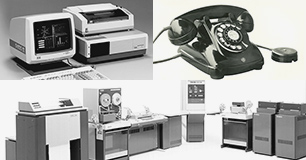Company milestones
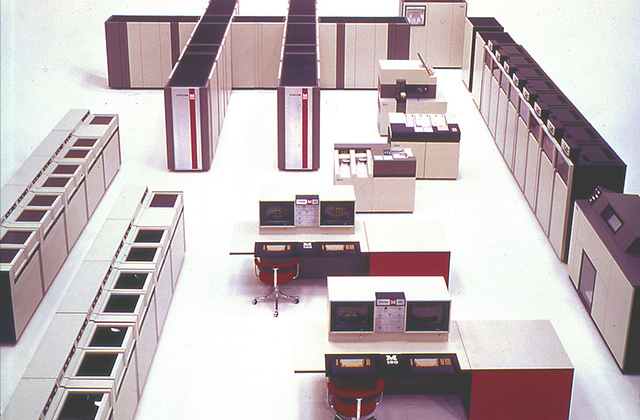
- 1. First Steps: Telecommunications (1923-1949)
- 2. The Dawn of Fujitsu's Computer Business (1950-1958)
- 3. A Decade of Bold Moves (1959-1969)
- 4. A Wave of International Standardization (1970-1979)
- 5. A Decade of Personalization (1980-1991)
- 6. A Shift to Solutions and Services (1992-2001)
- 7. Aim for a prosperous society that promotes the well-being of people (2002 - )
1. First Steps: Telecommunications (1923-1949)
"Computers" is the first thing that comes to mind for many people when they think of Fujitsu. But since its foundation, Fujitsu has striven to strengthen the very fabric of society with its innovative information and communications technologies.
This photograph shows an automatic switching system, a type of switchboard once used for connecting parties over telephone lines. But what does it have to do with Fujitsu?
Turn back the clock to 1923. The Great Kanto Earthquake had destroyed much of the public infrastructure of Tokyo and Yokohama, including the telecommunications facilities. In its efforts to restore telecommunications services, the Ministry of Post (currently the Ministry of Internal Affairs and Communications) decided to adopt automatic switching systems that had just started being introduced in Europe and America.
Prior to automatic switching systems, operators manually connected two parties over a telephone line using a manual switchboard. As the number of telephone users grew, so did the human burden. The Ministry of Post sought to solve the problem by introducing automatic switching. This sparked the remarkable development of telecommunications in Japan.
Contributing to the development was Fuji Electric Co., Ltd.. The company was originally established in 1923 as a joint venture between the Furukawa Electric Co., Ltd. and Siemens AG of Germany to spur production of generators and electric motors in Japan. Fuji Electric imported and sold switchboards and telecommunications equipment made by Siemens but later on succeeded in manufacturing an automatic switching system on its own.
In 1935, FUSI TSUSHINKI ( Note*1 ) SEIZO K.K., the company that later became Fujitsu Limited, was founded as an offshoot of the communications division of Fuji Electric.
Fujitsu had been launched by using pioneering technology to contribute to the development of Japan's highly public telecommunications infrastructure.
Note*1:"Tsushinki" is the Japanese word for telecommunications equipment.
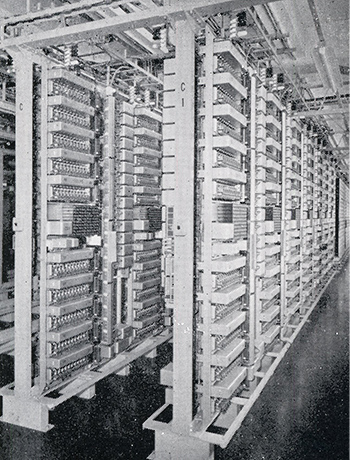
2. The Dawn of Fujitsu's Computer Business (1950-1958)
Fujitsu's FACOM100 was Japan's first relay-type automated computer. Surrounding the FACOM100 are Toshio Ikeda (third from right), the Fujitsu engineer known as "Mr. Computer" in Japanese computer history, and Dr. Hideki Yukawa (second from right), winner of the Nobel Prize in physics. Telecommunications equipment was Fujitsu's core business at the time and the FACOM100 used telephone switches.
After the Second World War, Fuji Tsushinki helped rebuild Japan's telecommunications infrastructure. The government designated Fuji Tsushinki as an official telephone and telegraph manufacturer, and the company grew rapidly.
At the same time, ambitious engineers in the R&D department increasingly wanted to pursue new businesses. A team of young engineers led by Toshio Ikeda started developing a "computing machine". The machine would be able to perform large numbers of complex calculations in a short period of time.
In the beginning of the 1950s, most computers used vacuum tubes for circuitry, but the technology was erratic and unreliable. So in 1954, Ikeda and his team developed the FACOM 100, Fujitsu's first computer using relays. Relays had been used for many years in Fujitsu's telephone switching systems and were highly reliable.
FACOM stood for "Fuji Automatic Computer" and its development marked the beginning of Fujitsu's computer. The success of FACOM opened up a new market for Fujitsu and taught the company's young engineers the thrill of taking on creative challenges.
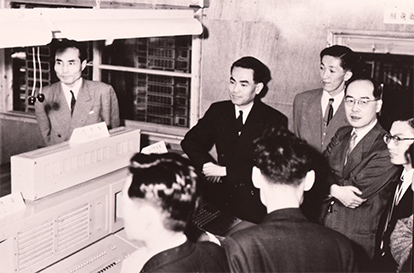
3. A Decade of Bold Moves (1959-1969)
With the FACOM100, Fujitsu had succeeded in developing a computer. But the company still wasn't ready to fully commit itself to the computer business. Fujitsu's fifth president, Kanjiro Okada, then made a crucial decision to bet the company's future on computers. The writing in the photograph, meaning "Infinite Growth" in Japanese, is a corporate slogan espoused by Okada. It was with this spirit of challenge that Okada carried out a series of business reforms aimed at making Fujitsu a leader in the computer industry.
Developing computers was a venture that required an enormous initial investment. Okada, who became president of Fujitsu in 1959, gave his full backing to the initiative. Okada also predicted a future in which telecommunications and electronics would converge. He set up two separate divisions to ensure that the company remained financially sound—one division focused on telecommunications equipment and another dedicated to computers.
In his 1962 New Year's address, Okada announced that he was betting the future of the company on computers and laid out his new "Communications and Electronics" management policy. Considering that the computer division accounted for less than 10% of sales revenue at the time, this was a momentous decision for the company.
The communications division provided the financial support for this venture. Although it lagged in the conversion of mainstream switching systems, the division improved its technological capabilities to help reestablish Fujitsu's reputation for high quality. The division also drove earnings growth by developing submarine coaxial cable systems and through its research and practical application of fully digital transmission systems. At the same time, the computer division continued to roll out new models of its FACOM brand computers one after another. A high point came in 1968, with the introduction of the FACOM230-60, a revolutionary computer with all integrated-circuit logic, two-CPU multiprocessor system and a new operating system. It became a runaway bestseller and won high praise from customers.
The year 1968 was also memorable as the year Fujitsu delivered the first Japanese-made online deposit system to Dai-Ichi Bank (currently Mizuho Bank). The system, which represented a major infrastructure system for Japan's economy, was an enormous breakthrough for Fujitsu's computer business. With this deal, Fujitsu came one step closer to becoming the top computer manufacturer in Japan.
Fujitsu also engineered the semiconductors used in its computers and communications devices. Although the semiconductors were originally supplied solely for Fujitsu's own products, Fujitsu began selling them to other companies both in and outside Japan. All this occurred less than 10 years after Okada declared that he was fully committing the company to building a computer business.
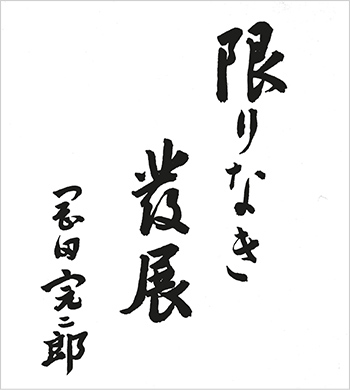
4. A Wave of International Standardization (1970-1979)
The history of technology is also a history of standardization. Even if manufacturers build products to their own standards, if a product becomes a de facto standard, other manufacturers will try to make products compatible with it. Computers were no exception, and Fujitsu was at a cross road in its road to growth.
Until the 1970s, one company's software wouldn't run on another company's hardware because all computer manufacturers built their machines according to their own proprietary technical specifications
In the 1970s, the IBM architecture became the de facto international standard. For other companies this meant that, if they built computers that were compatible with IBM's and could run the same software, they might be able to gain market share. For the majority of manufacturers who built IBM-compatible machines, however, the result was often the other way around—they faced greater competition and many went out of business.
Concluding that it had to compete based on international standards and succeed by building superior products, Fujitsu undertook a drastic shift in strategy. First, with trade liberalization progressing, Fujitsu formed a partnership with Hitachi, Ltd. under the condition that the two companies would share IBM-compatible architecture.
When Dr. Gene Amdahl, who had been in charge of developing IBM's 360 series, left IBM to set up Amdahl Corporation, in 1971 Fujitsu invested in the new company (in 1997 the company became a wholly owned subsidiary of Fujitsu) and collaborated in developing IBM-compatible mainframes. Amdahl's first commercial product, the 470 V/6, was manufactured at Fujitsu's Kawasaki plant. These mainframes, which underwent an extremely rigorous testing and evaluation process, were purchased by the U.S. National Aeronautics and Space Administration (NASA), in 1975.
Based on the joint development with Amdahl, Fujitsu also developed the enormously successful "FACOM M Series", designed to help existing users of Fujitsu computers smoothly transition to IBM-compatible machines.
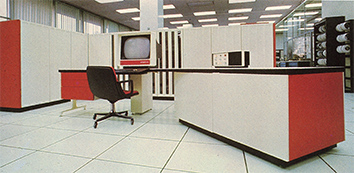
5. A Decade of Personalization (1980-1991)
Nowadays, when we think of computers, the first thing that comes to most people's minds is the personal computer. When people originally talked about computers, they usually meant mainframes and other large computers designed for business use. Fujitsu's original focus was also on these large business computers. Things changed, however, with the advent of Microsoft's Windows operating system.
In the 1980s, personal computers based on IBM's architecture became dominant as computer companies increasingly introduced IBM PC/AT compatible machines. In the 1990s, Microsoft's Windows operating system, which allowed these personal computers to perform many of the tasks that previously only large computers had been able to handle, grew to become the de facto international standard.
At Fujitsu, however, computers were still thought of mainframes for businesses and public institutions. The importance of personal computers for individual use was recognized as a hobby-use product, and consequently Fujitsu started late in pursuing the development.
Fujitsu introduced its first personal computers, including the FM-8 and the FACOM9450 in 1981 and had high evaluation. In addition, the FM TOWNS with multi-media capabilities was introduced in 1989 and Fujitsu tried to beat competitors. However, the competition in the market was tough to beat them.
In October 1993, Fujitsu changed direction and introduced its first IBM PC/AT- compatible computer, FMV series. In 1994, the release of FMV series with all the necessary software, was a turning point for Fujitsu's personal computer business. With the FMV, Fujitsu aimed to become a major player in the personal computer market.
Thus, Fujitsu ventured beyond the business-use computers into the personal-use market.
In the telecommunications area, Fujitsu's communications division also achieved breakthroughs during this period. In 1984, Fujitsu introduced COINS (corporate information network system) as a service to help build and support corporate networks. In the following year, Japan's telecommunications industry was deregulated, allowing businesses to build their own telecommunications networks. For companies, this offered a way to improve operational efficiency; after an initial investment into their own networks, companies could avoid expensive monthly telecommunication charges.
Fujitsu also promoted its overseas business. In 1988, Fujitsu's FETEX-150 full digital electronic switching system was used for Singapore's new commercial ISDN service. Since then, due to its high reliability, the system spread around the world, and Fujitsu expanded its business overseas in the fields of communications, computers and semiconductors.
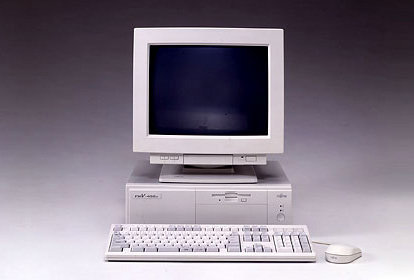
6. A Shift to Solutions and Services (1992-2001)
Fujitsu does not only sell products but also solves customers' problems and helps them achieve their business objectives using the company's technology. This has always been Fujitsu's philosophy since its foundation. By placing an emphasis on services, Fujitsu continues to find new ways to deliver on its promise.
In the 1990's, structural changes in the ICT industry advanced rapidly due to the progress in information technology as is evident from the phrases such as "networking", "open systems", "downsizing" and "multimedia".
In particular, "downsizing" from large mainframe computer systems to highly-functional, high-performance and inexpensive computers as well as "open systems" that realized connecting of computers regardless of the manufacturers by using open systems, such as UNIX or Windows became popular, and the computer industry was gradually shifting away from hardware manufacturing to the provision of software and services.
In June 1992, Fujitsu introduced PROPOSE ("PROfessional total supPOrt SErvice"), a services framework for implementing and supporting information and telecommunication systems. This was the first time that Fujitsu offered customers a selection of service products that were charged separately.
Traditionally, it was assumed by customers that services were incorporated into the price of hardware. Other technology companies, however, soon followed Fujitsu's lead and began developing and delivering independent IT services offerings. The entire industry was transformed. PROPOSE would later earn Fujitsu an award from the Japanese Ministry of International Trade and Industry (now Ministry of Economy, Trade and Industry).
With the relentless penetration of the Internet into every aspect of society, Fujitsu took the helm and launched a new business strategy under the slogan "Everything on the Internet" in 1999.
The Internet has dramatically changed our daily lives, business and society.
※ All product names and other proper names are trademarks or registered trademarks of their respective companies.
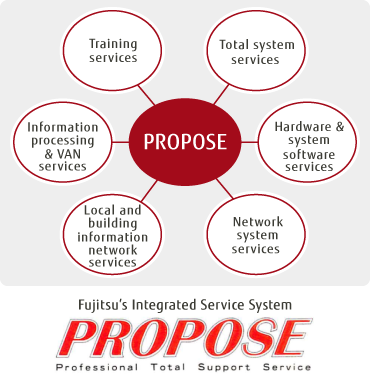
7. Aim for a prosperous society that promotes the well-being of people (2002 - )
With the explosive growth of the Internet, our lives, business and society have dramatically changed, and many of us cannot imagine a life without ICT anymore. Based on the technological capabilities developed over the years, Fujitsu will resolve a wide range of problems that our society faces today and aim to achieve a prosperous society that promotes the well-being of people.
In the middle of 1990's, Windows operating systems became widespread, and the performance of personal computers increased significantly. In addition, in the 2000's, with high-speed Internet access became widely available, Information and Communication Technology (ICT) made deeper inroads into all spheres of our lives, and many of us cannot imagine a life without ICT anymore.
In the 2010's, the advancement of ICT brought about tremendous changes. With the development of smart devices, such as smartphones, the time came when everything was connected to the Internet. ICT enabled people to make an appropriate decision by providing instant analysis of the huge amount of data sourced from everything connected to the Internet.
Fujitsu has been contributing to business and society in a variety of forms, including high-performance and high-capacity data centers, servers, mobile networks supporting smartphones.
In 2015, Fujitsu was selected as an official Gold Partner of the Tokyo 2020 Olympic and Paralympic Games. As a Data Center Hardware Partner, Fujitsu is supporting the success of the Tokyo Olympic and Paralympic Games through ICT technology, delivering new thrills for fans of these Games.
Since its establishment in 1935, Fujitsu has resolved our customers' problems they faced and contributed to our society through its technology solutions. Going forward, through our constant pursuit of new possibilities and creation of new values, Fujitsu will continue to contribute to the creation of a networked society that is rewarding and secure, bringing about a prosperous future that fulfills the dreams of people throughout the world.
※ All product names and other proper names are trademarks or registered trademarks of their respective companies.
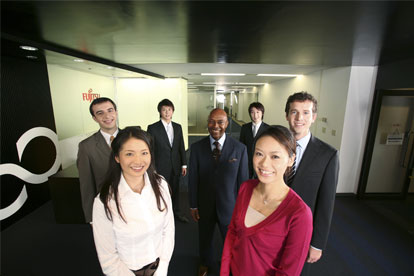
Share this page

